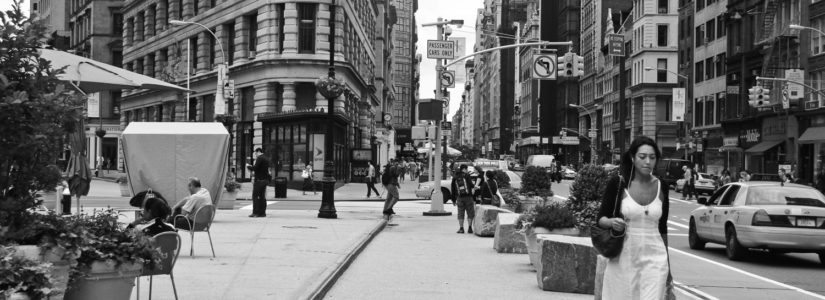
Beware False Prophets!
May 14, 2013 | by Anthony C. Wood, Founder & Chair
Article from the Spring 2013 Newsletter
Don’t you love those television talk shows where a public figure is confronted with an old video clip revealing a falsehood or a failed prediction? It is difficult to deny something when it is on the record and “in your face.” Now is the time for preservationists to start using the record to expose the false prophets who have been recycling the same failed arguments against preservation since the Landmarks Law was passed almost 50 years ago. With the proper documents in hand, retrieved from well-organized and preserved archives, preservationists can reveal those false prophets for what they are.
As a case in point, let us turn to the record of the Real Estate Board of New York (REBNY) when it comes to prophecies about preservation. The year: 1965. Mayor Wagner has just signed the Landmarks Law. John R. O’Donoghue, the executive secretary of the owners division of REBNY is quoted in The New York Times, warning that the new law will “seriously impede the modern expansion and progress of the city.” Yet, New York’s landmarks law is approaching its fiftieth anniversary and New York’s “modern expansion and progress” continues unabated. REBNY was wrong in 1965.
The year: 1986. REBNY is battling against the proposed Ladies’ Mile Historic District. Steven Spinola, REBNY’s president declares in a September 16 letter to the editor of The New York Times: “Landmark restrictions on this commercial area will have a chilling effect on the renovations and adaptations of long-vacant buildings, which have helped transform the area into a vibrant retail and commercial district.” If for the last 27 years Ladies’ Mile has been suffering from a “chilling effect” then New York has a long line of neighborhoods wishing to go into such a deep freeze! REBNY was wrong again in 1986.
The year: 1988. It is January 12 and Steven Spinola is at it again. REBNY now has its guns focused on the proposed Central Park West Historic District: “I’m sure it will come as no surprise when I say the Board opposes the creation of the proposed Central Park West Historic District. We are often criticized for our unwillingness to accept historic districts. And it’s true, that in the past we have opposed, rather than supported, most districts. Our opposition really began with the Upper East Side Historic District, and has continued to the other large districts such as Ladies’ Mile and this one. And our opposition will continue, as long as we believe that historic districts are proposed as development control mechanisms.” As their own testimony reveals, REBNY’s opposition to historic districts is not based on reality, just ideology. And, as promised, REBNY has continued to dogmatically oppose historic districts.
The year: 2012. REBNY launches a new initiative to oppose preservation: the Responsible Landmarks Coalition. The doom and gloom that REBNY predicted for New York’s historic districts have never come to pass. REBNY’s forecasts have been revealed to be mere opinion. Despite being consistently wrong since 1965, REBNY persists and worse, REBNY is still taken seriously by the press. REBNY’s positions have been reflected in anti-preservation editorials and columns in the New York Post, Crain’s New York Business, and the New York Observer, with more certainly to come. As recently as March 31st, The Wall Street Journal printed an article giving press attention to REBNY’s new anti-landmark coalition.
Would REBNY’s views receive so much ink if their record of failed predictions was better known? Clearly their status as a false prophet has not received the attention it deserves. How does one know when a prophet is not to be believed? Check the record. Where does one find the record? In archives. That, of course, is where the work of the New York Preservation Archive Project comes into play. In addition to documenting preservation’s history (through oral histories) and preserving it (by finding proper homes for preservation papers and materials), we are now reaching out to preservation organizations around the city to help them appreciate, preserve, and utilize their own archives. One such utilization of archival material is to expose false prophets who undermine preservation and ultimately, the welfare of our City.
Preserving and documenting preservation’s history is not an antiquarian exercise; it is a vital activity for those living and working in the present. In one very real sense, archival work is stealth advocacy. Knowing the past can help shape present and future debates. The preservation movement needs to document and preserve its history in order to have the facts at its finger tips. Our story is a powerful one but to be told convincingly, it must be documented, preserved, and known.
Don’t lose your powerful archival ammunition through neglect, or let it sit languishing on the shelf or in your files. Today, more than ever, preservation needs all the firepower it can muster. There is power in your history. It is in your archives. Find it. Use it.